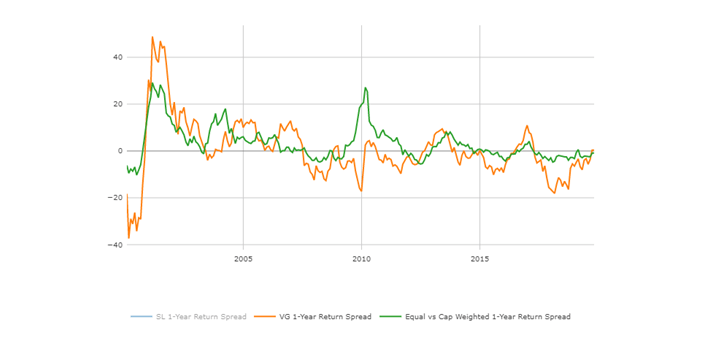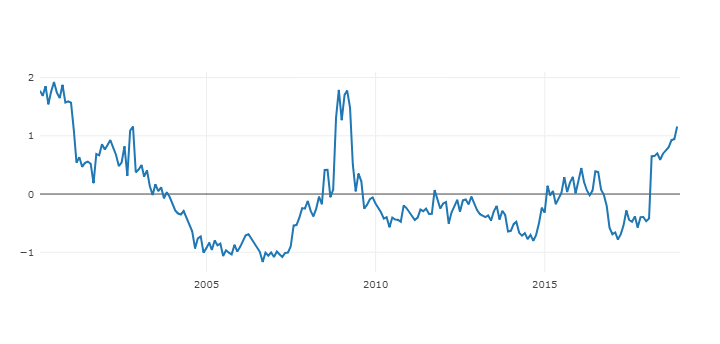
US economics, inflation, and the Fed
Consumer and Producer Price Indexes came in stronger than expected in August, after trending lower over the late spring and early summer months. Likewise, core consumer and producer (wholesale) prices, which exclude the volatile energy and food components, moved higher making it harder for the Fed to change its hawkish stance and start preparing for interest rate cuts next year. Major investment banks started postponing next year’s cuts in their forecasts to the second half of 2024. It became clear that the central bank may keep the benchmark short-term interest rate higher for an extended period to effectively fight inflation. The Federal Open Market Committee (FOMC) kept the federal funds rate steady at 5.25%–5.50% in September, but the possibility of another quarter-point hike this year remains on the table. The Fed was more hawkish this past summer, which put upward pressure on Treasury yields.
Higher oil prices and the United Auto Workers’ strike could potentially add to rising prices. While higher oil prices directly impact consumers and could impact other products prices, the smaller auto inventories could bump car prices as well. All these developments could force the Fed to pause with reversing the interest rate course in the near future.
Consumers are feeling the inflation pressure, and this is starting to have a greater impact on how they spend their money. According to the University of Michigan, consumer sentiment fell for the second-consecutive month, to 67.7, in August, a level well below the historical average of 86 according to Value Line. This may get worse, given the aforementioned higher energy prices ahead of the upcoming peak heating season. The current consensus is that the consumer will be more cautious this holiday shopping season, with higher prices for essential items causing shoppers to cut back on discretionary spending. This also comes as savings accounts shrink and nationwide credit card balances keep increasing.
Nevertheless, the US economy is resilient enough at the moment. Empirical Research Partners points out the nation’s sensitivity to higher interest rates has diminished substantially as a lot of homeowners locked in very low mortgage rates by historical standards and US businesses could have borrowed “long” money at very low rates as well.
Global economy
In their “boiling the frog narrative” J.P. Morgan highlights a tension between near-term forces promoting resilience and the seeds being sown for an eventual end to the expansion. Central to the resilience is an expected developed markets central bank pause amid still elevated inflation and a continued willingness by businesses to expand in the face of slower profit growth and higher interest rates. This resilience promotes sticky inflation and a need for sustained restrictive policy stances that should, in turn, compress profit margins and erode balance sheet health. Timing the point at which building vulnerabilities spark an end to the expansion is difficult. The eventual break could take as long as 12–18 months. The bank believes that the downturn starts later, requires higher terminal rates, and proves deeper and more globally synchronized than is commonly anticipated.
Recent news presents two challenges to near-term resiliency. The first relates to the midyear slide in economic momentum in Western Europe where they now anticipate the UK and Euro area will stall this quarter. With revised current-quarter growth forecasts in the US and Asia in recent weeks the bank anticipates the current-quarter global GDP to grow at a 2.6% annualized rate.
Stock market: Why IT is not in a bubble zone
This year the majority of US stock market return was driven by Artificial Intelligence. The outperformance was so significant that a lot of market participants started talking about a bubble forming in the IT, Media and Communications leadership. Goldman Sachs in their Global Strategy paper of September 2023 explains why the bubble fears might be overblown: “Aside from their valuation, an important difference between the current leaders in the AI technology space and those in the late 1990s bubble is that the current crop of leaders is already very profitable and cash-generative, and they are able to invest at a high rate even in an environment of higher interest rates.

We do not find the valuations similar to other bubble periods. There have already been significant re-ratings of a few companies that can be viewed as ‘early winners’ — companies that are either the Pioneers in the space or the Enablers. These are likely to continue to perform as the technology scales. Ultimately, the second-wave pioneers that innovate and create new products based on the original technology are also likely to offer exciting investment opportunities. In time, the bigger opportunities may be found in identifying the new Reformers that reshape industries by leveraging what AI has to offer. Best-in-class Adaptors with industry-leading execution are likely to provide an attractive investment opportunity. However, as many companies adapt to AI, increasing benefits should feed through to consumers. Companies that can tap into this opportunity might benefit more than the market is currently discounting”.
The information and opinions included in this document are for background purposes only, are not intended to be full or complete, and should not be viewed as an indication of future results. The information sources used in this letter are: WSJ.com, Jeremy Siegel, Ph.D. (Jeremysiegel.com), Goldman Sachs, J.P. Morgan, Empirical Research Partners, Value Line, BlackRock, Ned Davis Research, First Trust, Citi research, HSBC, and Nuveen.
IMPORTANT DISCLOSURE
Past performance may not be indicative of future results.
Different types of investments and investment strategies involve varying degrees of risk, and there can be no assurance that their future performance will be profitable, equal to any corresponding indicated historical performance level(s), be suitable for your portfolio or individual situation, or prove successful.
The statements made in this newsletter are, to the best of our ability and knowledge, accurate as of the date they were originally made. But due to various factors, including changing market conditions and/or applicable laws, the content may in the future no longer be reflective of current opinions or positions.
Any forward-looking statements, information, and opinions including descriptions of anticipated market changes and expectations of future activity contained in this newsletter are based upon reasonable estimates and assumptions. However, they are inherently uncertain, and actual events or results may differ materially from those reflected in the newsletter.
Nothing in this newsletter serves as the receipt of, or as a substitute for, personalized investment advice. Please remember to contact Signet Financial Management, LLC, if there are any changes in your personal or financial situation or investment objectives for the purpose of reviewing our previous recommendations and/or services. No portion of the newsletter content should be construed as legal, tax, or accounting advice.
A copy of Signet Financial Management, LLC’s current written disclosure statements discussing our advisory services, fees, investment advisory personnel, and operations are available upon request.



























































































